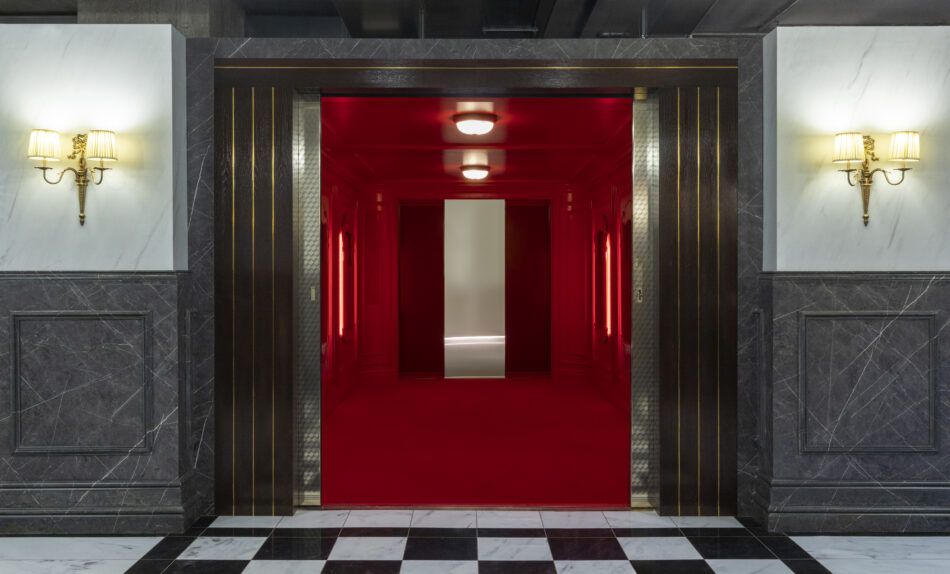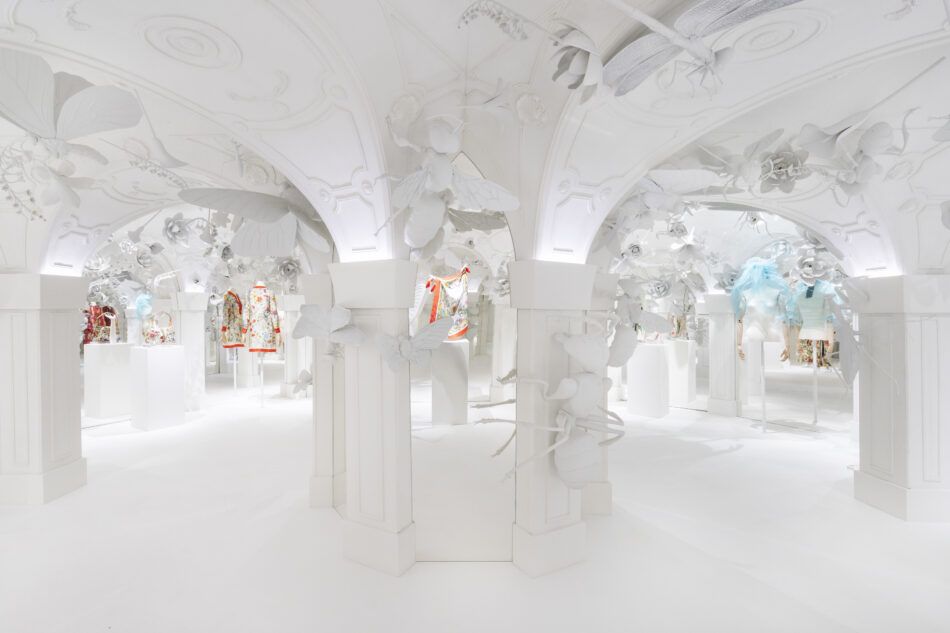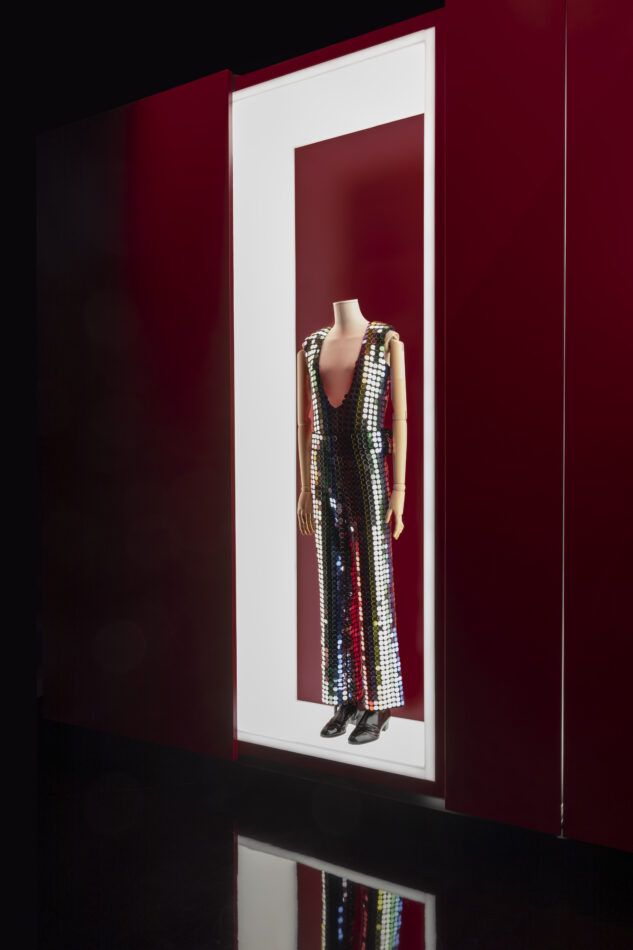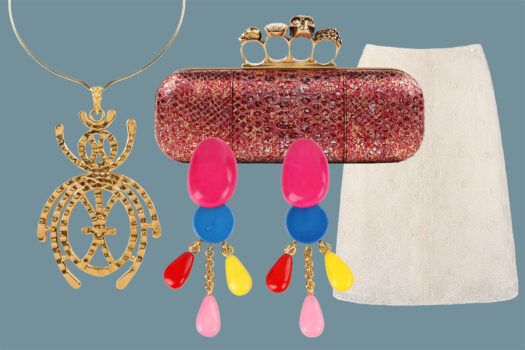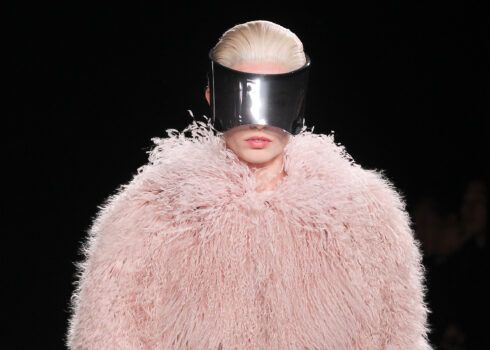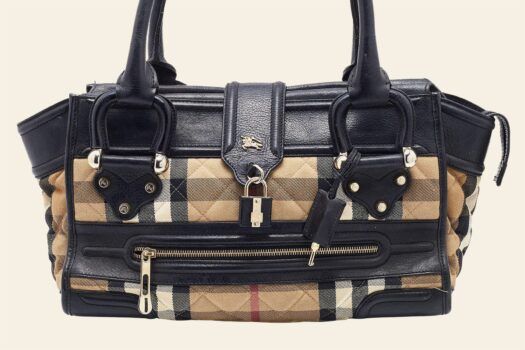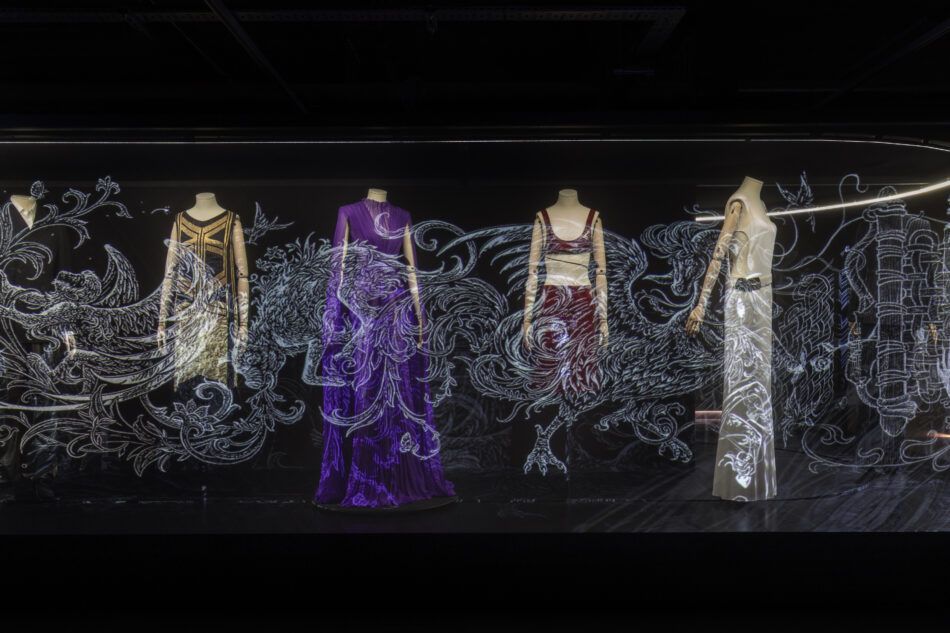
What does Gucci mean to you? Perhaps it’s the sleek, minimalist collections of Tom Ford, whose tenure as creative director, from 1994 to 2004, infused the Florentine label with unabashed sex appeal.
Or maybe it evokes the kitschy-cool aesthetic of designer Alessandro Michele, head of the house from 2015 to 2022, who lit up the fashion firmament with his folksy fairy-tale collections. Alternatively, your Gucci go-to might be one the fashion house’s timeless emblems, like the equestrian-inspired red-and-green web stripe introduced in 1951 or the Bamboo 1947 handbag, a postwar creation that used bamboo for its lightweight handle in lieu of the traditional wood, which was in short supply at the time.
Along with these historical markers, you may call to mind the label’s pop culture credentials. Who can forget Lady Gaga’s killer wardrobe in Sir Ridley Scott’s 2021 true-crime biopic House of Gucci? Or the bedazzling sequin jumpsuit worn onstage by Harry Styles at Coachella 2022?
There’s no need to pick a favorite. The world of Gucci glamour encompasses storytelling, savoir faire and bold design, all informed by interrelated ideas and values rooted in the brand’s history. This universe is now the focus of “Gucci Cosmos,” the brand’s traveling exhibition that has just arrived in London at the sprawling 180 Studios private gallery.
Celebrating the mythos of the label through a series of immersive spaces, the show — first presented in Shanghai and slated to move on to Paris and then Kyoto next year — was conceived and designed by British contemporary artist Es Devlin and curated by Italian fashion theorist and critic Maria Luisa Frisa.
Each iteration of the exhibition draws from the culture and history of its location. In London, it is situated close to the Savoy, where the company’s namesake founder, Guccio Gucci, worked as a porter in 1897. His interest in fashion was sparked by the sartorial elegance of the hotel’s elite clientele and, even more, the suitcases they carried. He returned to Florence with a dream, and in 1921 opened his first boutique, on the via della Vigna Nuova, specializing in English-style luggage.
Visitors to the show begin their experiential journey by passing through a set of revolving doors like those at the Savoy and stepping into a red “elevator,” which gives the illusion of rising thanks to fast-moving projections. This is a nod to the hotel’s original red-lacquered “ascending room,” London’s first electric elevator.
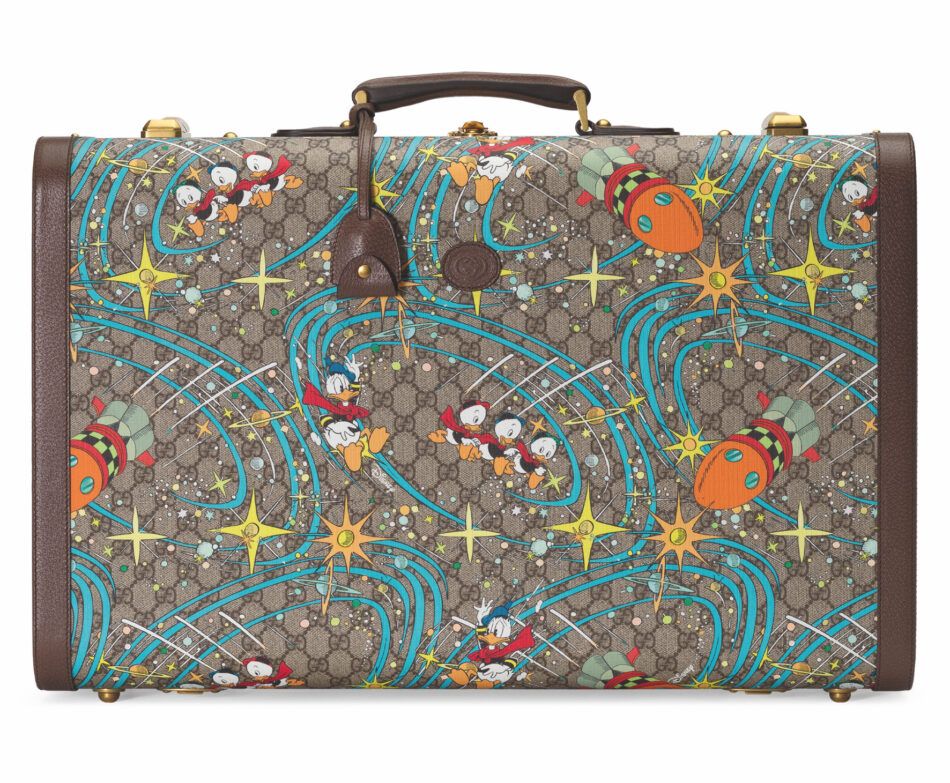
From there, Devlin’s multisensory art experience becomes more elaborate and immersive. One exhibition room is a minimalist baggage-claim area where a moving circular belt transports a variety of vintage and modern luxury luggage, including an original GG canvas tennis bag from the 1970s and a set of suitcases with a Donald Duck print made in collaboration with Disney under Michele.
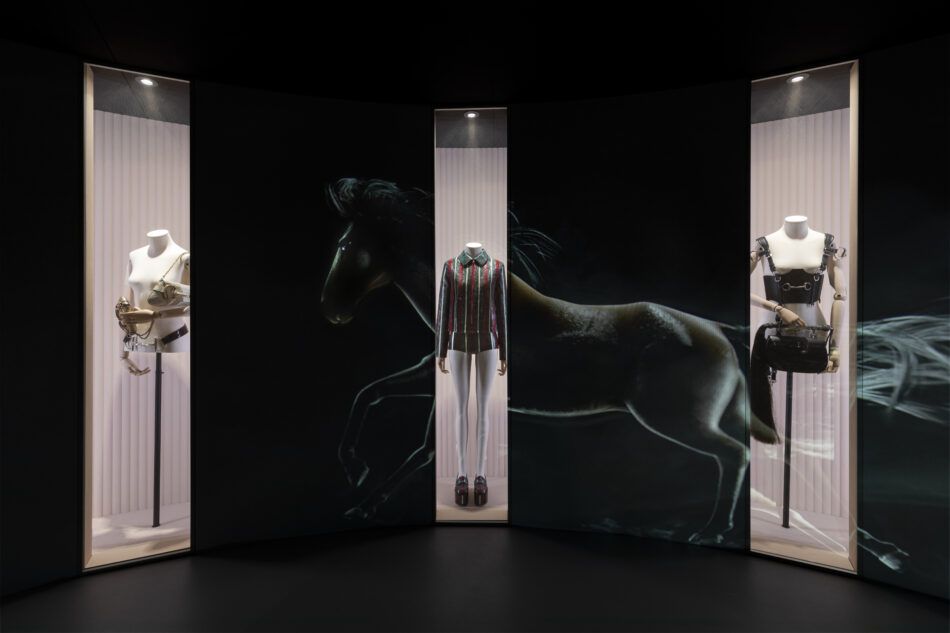
Further rooms highlight hallmarks of the brand. Rare pieces from Gucci’s equestrian-inspired archive, for example, are displayed in a space designed like a giant zoetrope: As footage of a galloping horse slows down, light sources briefly illuminate the chamber’s hidden vitrines, revealing riding-influenced outfits and accessories, among them a 1960s GG-monogram jacket with a large stirrup-like fastening and a dramatic 2016 catwalk gown designed by Frida Giannini with cut-outs embellished by bridle bits.
Gucci’s love affair with beasties and botanicals is celebrated in a bright-white cavernous room called Eden, whose ceiling is festooned with sculptures of oversize bees and butterflies. Exhibits showcase Gucci’s iconic Flora print, created in 1966 by Italian artist, illustrator and set designer Vittorio Accornero de Testa for a silk scarf commissioned as gift for Princess Grace of Monaco after she visited the Gucci boutique in Milan.
The suit, another Gucci favorite, is given a grand visual treatment, with men’s and women’s styles projected onto the huge silhouettes of two white-resin “sleeping giants” inspired by Jonathan Swift’s Gulliver’s Travels. A key look is Ford’s red velvet suit from his Fall/Winter 1996 women’s collection. The outfit makes a real-life appearance in the Carousel room, a heady light and sound installation that features a number of rare catwalk and celebrity outfits, including Harry Styles’s aforementioned sequined Coachella jumpsuit and a jacket from Michele’s collaboration with Elton John.
“Gucci Cosmos” is a playful “journey” encouraging visitors “to enter a maze of multiple imaginations,” Devlin told a press conference about the exhibition. “Magic wears off on a human, so we are always looking for new ways to conjure it up. We used [photogrammetry] mapping and lidar technology to create a strong sense of visual immersion fused with audio recordings and music allowing the mind to travel.”
The nonchronological arrangement of the exhibits, according to Frisa, reflects the fact that “they weave together a history that is alive, shining a light on Gucci’s designers, who have always looked to the past to reinvent the present.” These luminaries include the Italian label’s newly appointed creative director, Sabato De Sarno, who recently presented his debut collection at Milan Fashion Week. “We were still waiting for his show pieces to arrive here in London while we were setting up the exhibition,” says Frisa.
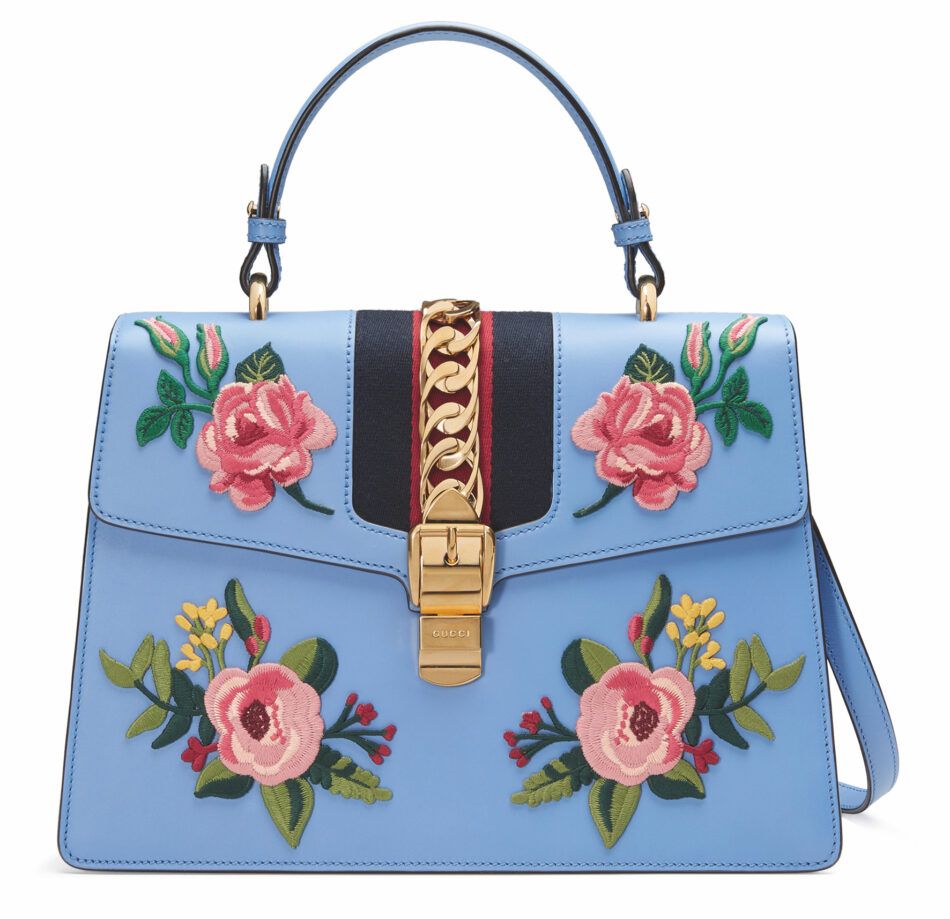
A commitment to quality within the context of strong narratives has cemented Gucci’s leading role in the world of luxury over the years, maintains vintage fashion expert Carla Ciocci, of the designer boutique Opherty & Ciocci. “The charm of the Gucci brand lies in its use of premium materials and top-notch manufacturing techniques — always perfect and recognizable on all its creations,” she says, adding that her favorites among the house’s styles are from the Tom Ford era. She also, however, admires the collections created by American designer Dawn Mello, who revived the bamboo bag and snaffle-bit loafer soon after joining the company, in 1989, and later was responsible for hiring a young Ford to take over the women’s-wear division.
Ford “completely changed not only the house but the way we dress,” says Alexis Novak, founder of Tab Vintage. “He took deep inspiration from one of his design idols — another fellow American designer, Halston — in designing clothing to be touched and lived in. The slinky chic fabrics, silhouettes and colorways made for a sexy and never vulgar repertoire.”
Alex Cohen, who runs TheRealList, notes the allusions to Gucci’s history in Ford’s work, citing his Fall/Winter 1996 collection as seminal. “The gowns featured modernist versions of archival hardware,” Cohen says. “For example, the embellished dragon buckle recalls the mythological references of earlier Gucci ready-to-wear collections. We actually have an example of this in the form of a suede Gucci coat with enameled Dionysus buttons and buckle documented on the runway in 1972! The dragon is now a definitive house code for Gucci, and the glamorous dragon-embellished pieces from this collection are some of the most sought-after by collectors and fashion lovers alike.”
Stunning clothes aren’t all the fashion house has to offer fans. “The most underrated vintage finds are from Gucci’s long history of fabulous home decor,” Cohen says. “On our storefront, we currently have examples like figural mallard duck sculptures and anchor bookends produced in the 1970s.”
Cohen’s enthusiasm for collectible items is shared by Devlin. “An object is so much more than a static thing,” she says. “ ‘Gucci Cosmos’ was for me an opportunity to explore the mythology at the heart of a house that has had so much influence around the world.”
With that in mind, perhaps the name Gucci isn’t a visualization tool at all but a charm that connects us to a broader aesthetic experience within the universe of luxury, where its constellation of dreamy pieces shine bright in our collective memories.
